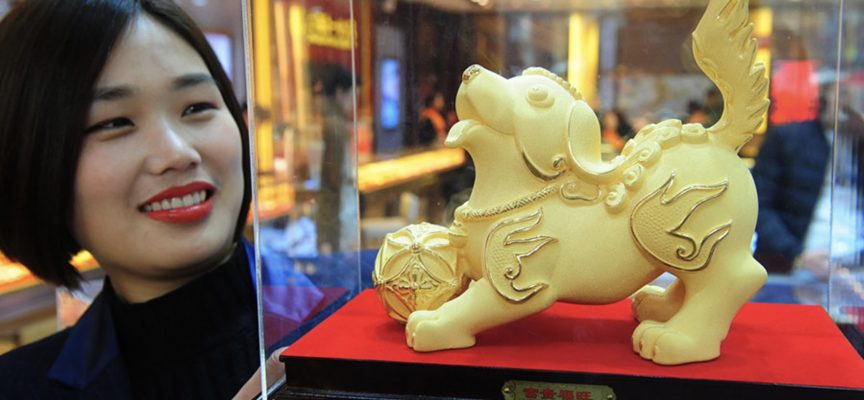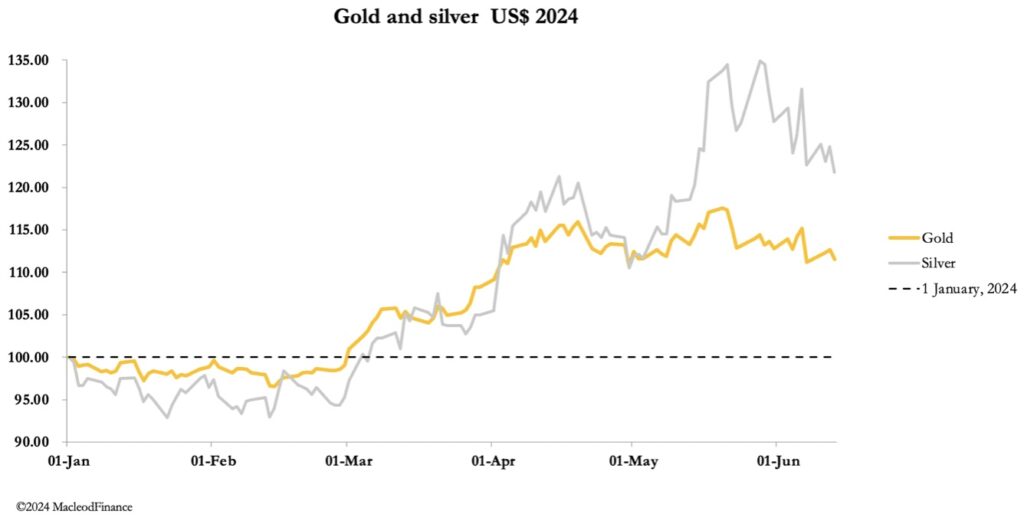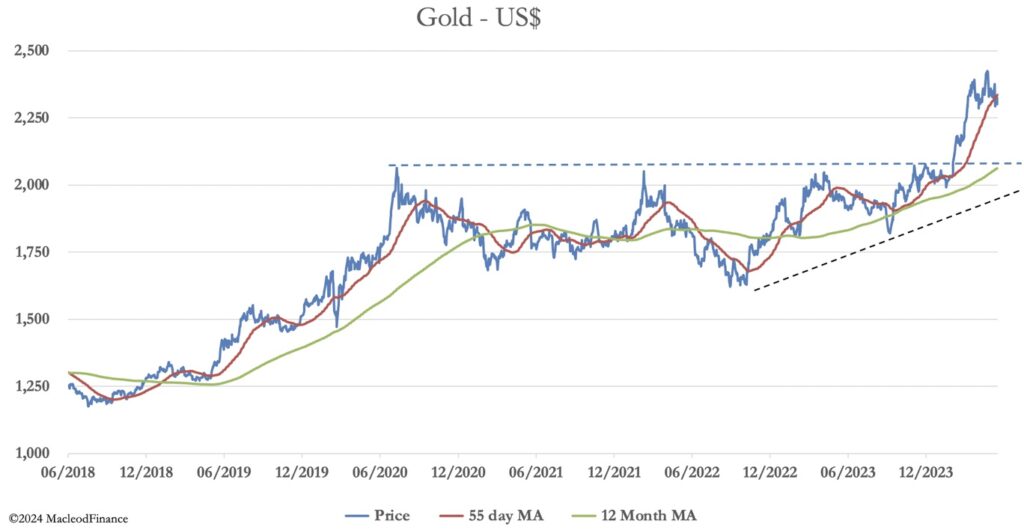Gold’s Open Interest has collapsed, but look at China’s massive savings rate and gold.
June 14 (King World News) – Alasdair Macleod: Gold and silver steadied this week, at the lower end of their current trading ranges. In European trade this morning, gold was $2317, up $22, while silver was $29.07, down 8 cents.
Comex volumes in gold were low, while silver’s were high.
The trading dynamics in the two metals are dissimilar, as our next two charts show:
Gold’s Open Interest Has Collapsed
Note the divergence between gold’s Open Interest and the price, and how it contrasts with silver, where open interest and the price correlate as one normally expects in a bull market. In other words, the gold price has been rising without an increase in buying interest, while in silver a more normal relationship exists between rising prices and buying interest.
Pricing Being Taken Away From Paper Markets
Pricing is being taken away from paper markets, with significant premiums developing in Shanghai. Today’s PM benchmark price translated into $32.8, a premium of 12.7% over western market’s spot at that time. Premiums of this sort can be expected to persist, and a combination of metal shortages in the fourth year of silver supply deficits and rising industrial demand is a typical commodity bull market setup.
Increasing paper interest in silver, reflected in both Comex volumes and Open Interest are therefore to be expected, as are bouts of profit taking from time to time. The position in gold is fundamentally different, with Comex Open Interest falling while prices rise or at least remaining firm. They reflect an extraordinary divergence between market sentiment and prices.
It is almost always the rule that investment sentiment is low at the depths of a bear market, and high in a bull market. But bizarrely, that is not the case here. The explanation lies in a monetary phenomenon, whereby foreigners are the first to recognise the weaknesses in a fiat currency, so will reduce their exposure to fiat credit seeking the safety of gold. The domestic users of the currency are the last to recognise the risks to it, seeing it primarily as a stable means of exchange. This blindness is not limited to day-to-day exchanges of goods and services but extends to the heart of financial services and the psychology of their practitioners as well.
Consequently, bullion banks, hedge funds, and anyone accounting for their profits and losses in dollars, euros, yen et al as his national currency is unaware of the threat to it from foreign selling for gold, which is simply the escape from credit risk into internationally legal money without any counterparty risk. We all talk of rising gold prices, while foreigners think in terms of the threat to the value of their exposure to our currency.
China’s Massive Savings Rate And Gold
This is why Shanghai’s physical market threatens the very existence of the West’s fiat-based financial system, and why we just don’t see the danger. Furthermore, China’s enormous household savings rate amounting to 35% of their GDP this year and next — the equivalent of about $6 trillion, or 80,000 tonnes of gold — are overhanging precious metals. Small wonder that the bullion banks have become trapped by their paper obligations.
For those of us who persist in thinking that gold is in a bull market, rather than their currency is losing its value, I finish with the technical chart below:
© 2024 by King World News®. All Rights Reserved. This material may not be published, broadcast, rewritten, or redistributed. However, linking directly to the articles is permitted and encouraged.










